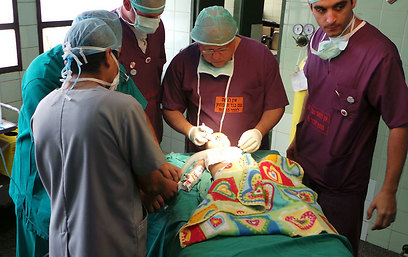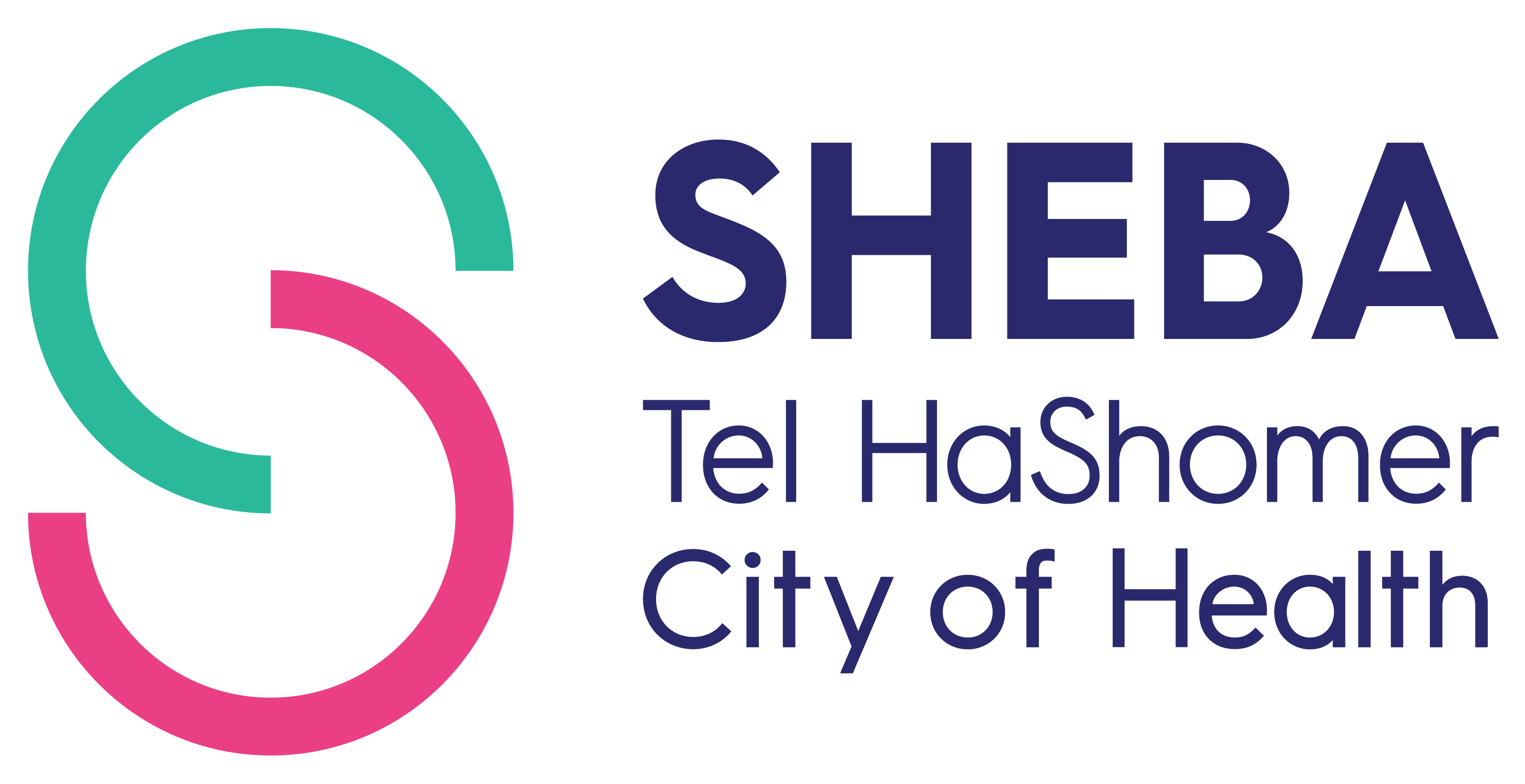Little Eduardo Receives a New Present from Israeli Doctors - Lips - Part 3
Part 3 of a five-part series Ynet. Translated from Hebrew.

Cleft lip in the backwards areas of South America is much more than a birth defect. There is a prevailing belief that these children bring forth bad luck, and the parents have to hide them at home. The three-month-old Eduardo has never gone on a stroll with his parents outside their home. Today, he received present - new beautiful lips, like he never had before.
It is time to operate. The children assigned to a surgery are already wrapped in green hospital gowns, waiting in perfect silence for their turn to enter the operating room.
The quiet here is very noticeable. This hospital is packed with people, lines are snaking from the reception areas into the corridors, and the benches of the different departments are full of patients awaiting their turn to see the doctor. However, it is all very quiet, no one shouts, no one raises their voice, the quiet wraps every corner here. Apparently, we can learn something from the Peruvians.
The first patient is Eduardo Maman, a cute, three-month-old baby, who has a severe case of cleft lip. The anesthesia team, brought especially from Lima, the capital, begin their work. A quarter of an hour later, as Eduardo is sedated and on a respirator, the Israeli team starts to work.
Cleft lip surgery is not a simple one and it requires many incisions in the sensitive area of the upper lip. In an adult, this is an area of 2 centimeters, in a three months old baby this is only about 8 millimeters, and the work must be very precise. Dr. Winkler's surgical marker marks the area, Leora Bitan, the surgical nurse pulls out the instruments brought in suitcases directly from the Sheba Medical Center's supply room, and the surgery is underway.
Winkler performs the complex cuts, starts the initial sutures, and leaves the closing to the doctors he brought with him. "In this area," he explains to me when we are outside the operating room, "we must be very accurate. A single suture out of place and this is a mistake that will cost the patient with unnecessary scars which will only increase in size over the years."
Most of these surgeries take about an hour, but this is a complicated case, and two-and-one-half hours go by before the work is completed and Eduardo is moved to the recovery room. Although the area is still swollen, the birth defect has been completely corrected.
The Israeli team, painstakingly slow, but very deliberately, have managed to reconstruct Eduardo the perfect little lips he never had. In two hours, he will be able to eat normally, and within a few months the area will be fully recovered and the surgery will hardly be noticeable.
A few minutes later, Mary, Eduardo's mother comes in. Dr. Gil Nardini and Dr. Alejandro Medina, who is also the translator, tell her how her son's surgery went. When she hears that the surgery went well and cleft lip had been fixed, the young mother begins to shed tears at an increasing rate. She holds on to the hands of Dr. Nardini and cannot stop thanking the doctors.
This moment, the thankful look in the mother's eyes, the tears of joy dripping from her cheeks to the floor, is special. This is what gives the team's mission its human, emotional aspect and makes it all worthwhile. Up to that exciting moment, the work that was done is mostly structured and organized - the triage, the preparation for surgery, and the surgery itself - the work is mechanic, almost robotic, just following predetermined rules and procedures.
The encounter with the mother and the bursting emotions reminds all the team members the reason why they out their own comfortable lives in Israel on hold, hopped on a plane and 30 hours after landed at some remote corner at the other end of the globe, to bring compassion to some children.
While holding her little son now awakened from the anesthesia, and trying to calm him down from crying, Mary, just 23 years old, tells me more details about her life. She lives with her husband in one of the small villages outside of Cusco. She heard about the arrival of surgeons from Israel on the radio, and immediately boarded the first available train with her son. They were on the road for two and a half hours to arrive to the hospital.
"What would you do if there was no such opportunity of a free surgery, I ask her. "I would have not had him operated," she replies, "I do not have the money needed for such a surgery. Eduardo would have had to continue to grow up with this birth defect."
A cleft lip in these areas of the world means much more than just a birth defect. Locals are sure that children with cleft lip bring bad luck to their lives. Others see them as demons sent into the world to cause harm to others. These beliefs cause the parents of children with cleft lip to hide them at home, sometimes, without letting them see the light of day. Many children remain closed inside their homes for years, some of the parents tell me.
"For the three months since he was born," says Eduardo's mother of me, "I did not take him outside of the home. People in our village believe that children with cleft lip are the cause for very bad storms to occur. I did not want to subject him to these evil people."
What is the first thing you will do with Eduardo once you are back at home, in the village, I ask her, "I will take him outside, to the fields near our home," she says. "He has never been outside," she says and the tears return to flow on her cheeks.









